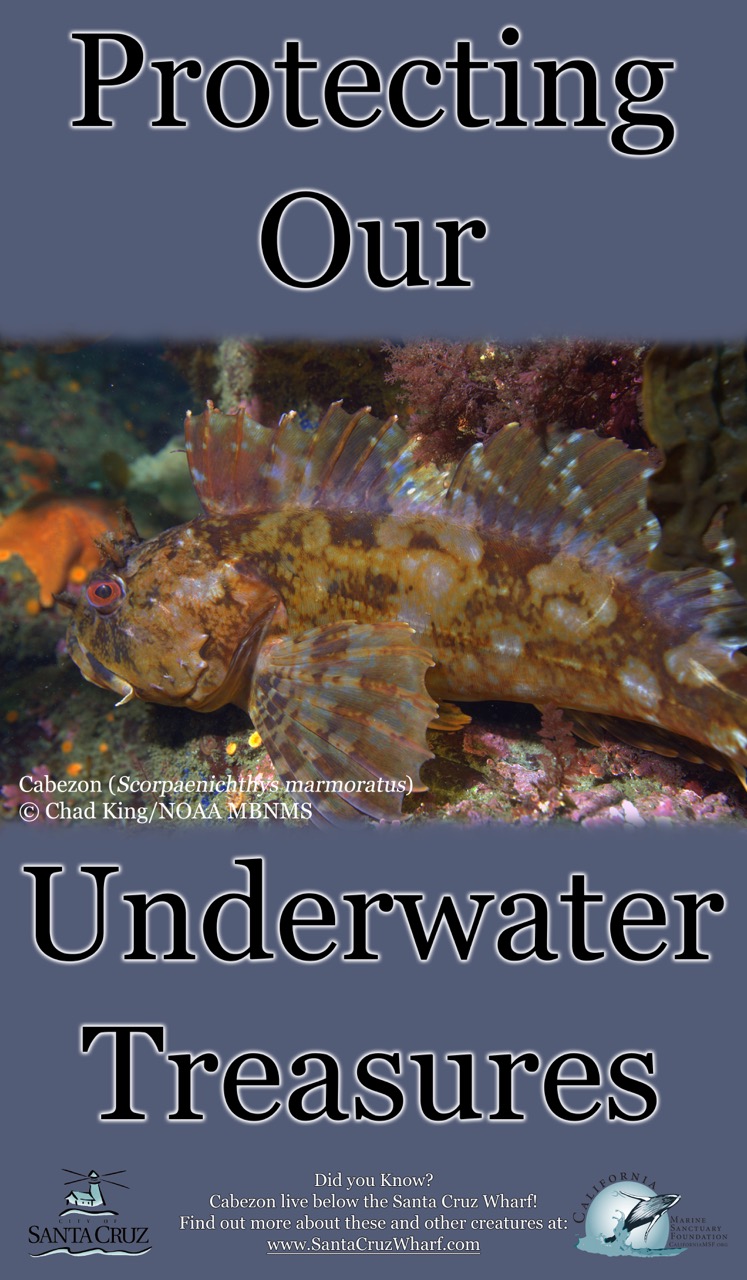 Scientific: Scorpaenichthys marmoratus
Scientific: Scorpaenichthys marmoratus
Common Name: Cabezon
Diet: Crustaceans, fish, molluscs
Habitat: Found in kelp forests and range from southeast Alaska to Baja, Ca
About: The Cabezon gets its name from the Spanish language and it means "large head". Cabezons are able to swallow their prey whole, when prey like crustaceans is consumed the Cabezon will regurgitate it. Their life cycles are very interesting- Adult female Cabezon spawn on rocky outcrops (rock formation that is visible from the surface) and the male Cabezon will guard the eggs until they hatch. Once the eggs have hatched the young will drift out to sea and develop physical characteristics that resemble silver fish. The young will hide in the drifting kelp until mature. As the Cabezon become adults they settle in tide pools and will travel back and forth from reefs and kelp forests.
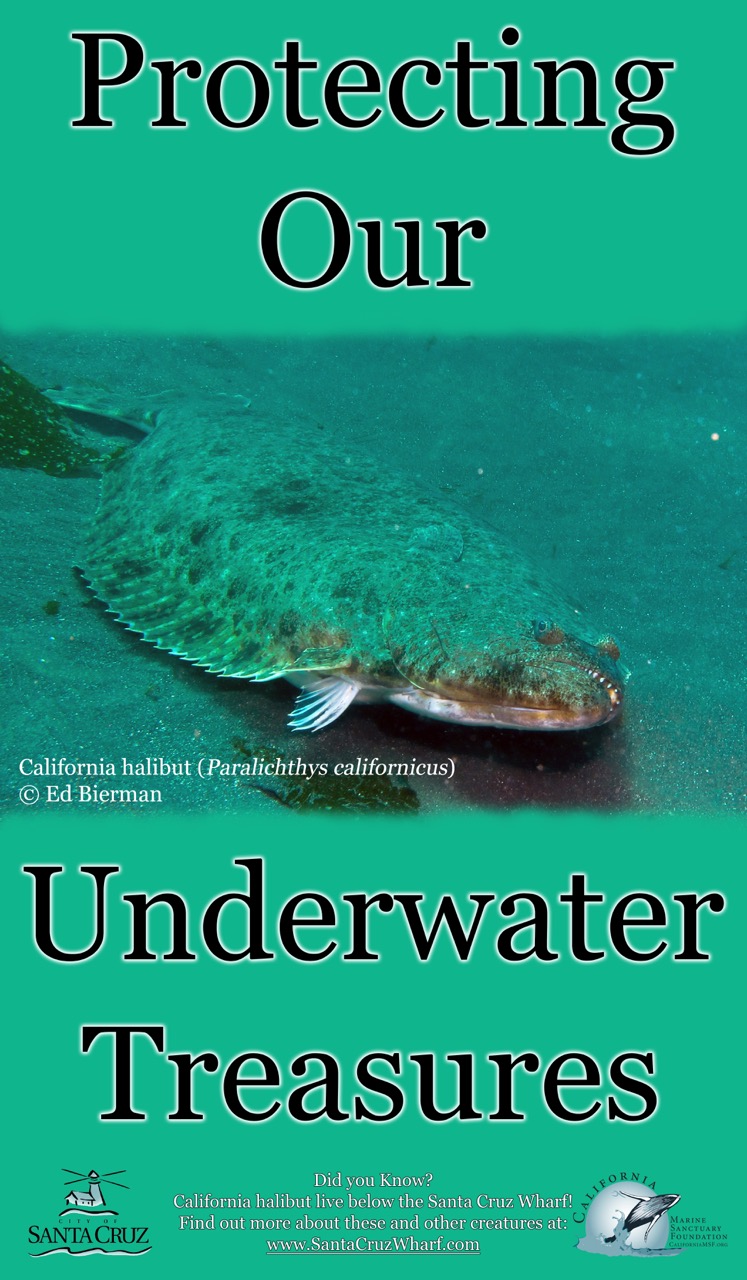 Scientific: Paralichthys californicus
Scientific: Paralichthys californicus
Common Name: California Halibut
Diet: Anchovies, small fish, and squid
Habitat: Found on the sandy or muddy seafloor, kelp beds, and some rocky areas and range from Magdalena Bay, Baja California to the Quilayute River, British Columbia
About: The California Halibut are flatfish that can grow up to five feet and weigh 72 pounds. Their eyes are pointed and on the same side of their bodies. California Halibut typically conceal themselves in the sand waiting for food to pass by but they will also swim into schools of anchovies when hungry. When California Halibut larva hatch they had one eye on each side of their heads, after about 13 days an eye will begin to migrate towards one side where it will remain for the rest of the Halibut's life. At this stage in life when the eyes have settled on the head the California Halibut is no more than one inch long! They live to be on average 30 years old.
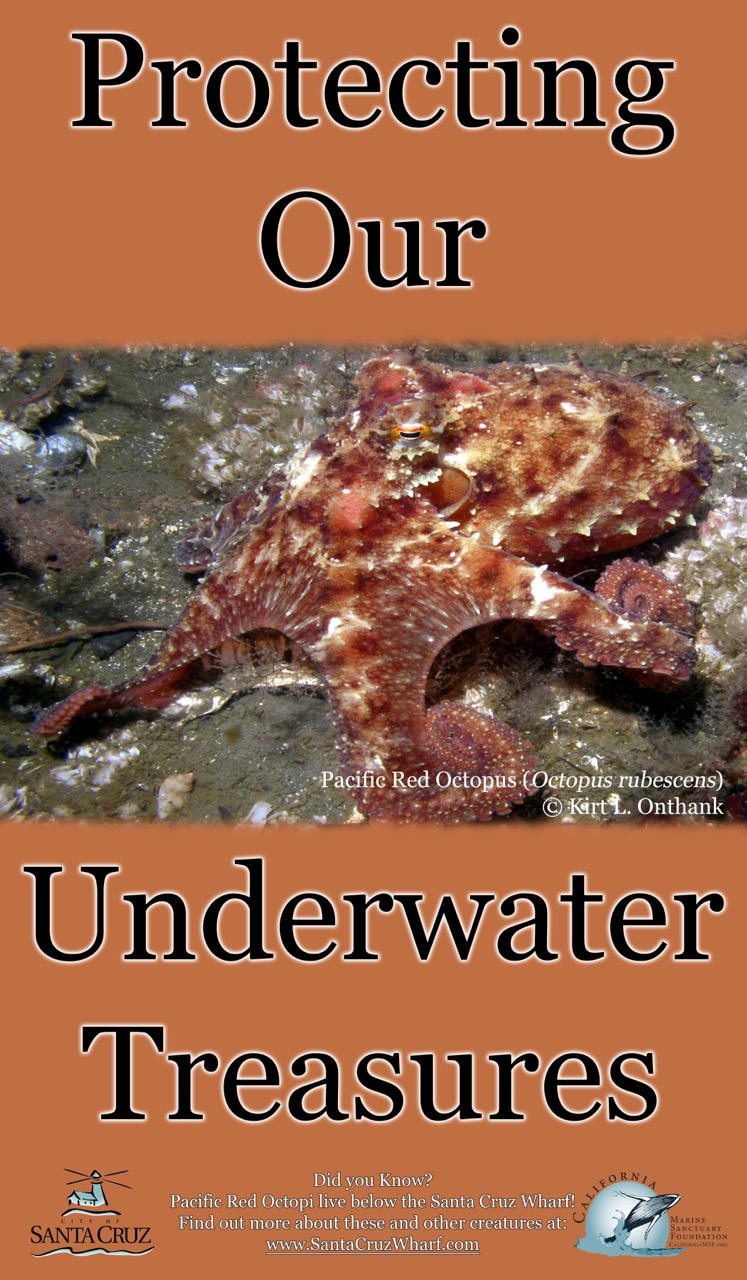 Scientific: Octopus rubescens
Scientific: Octopus rubescens
Common Name: Pacific Red Octopus
Diet: Small crabs, hermit crabs and other crustaceans, molluscs, and fish
Habitat: Found in kelp forest and range from Central Alaska to Northern Mexico
About: The Pacific Red Octopi get their name from the color of their skin, however the reddish, brownish color they typically have is not the only color they can be. They have to ability to turn yellow, brown, white, red or a variety of marbled colors. This color changing adaptation is enhanced by the octopi being able to change their skin textures to conceal them in sandy and rocky areas. The Pacific Red Octopi also have beaks that are very sharp. They use these beaks to open crabs and other crustaceans, from there the octopi inject their prey with venom. The Pacific Red Octopi will live to be about two years old. They have three hearts; one pumps blood through the body and the other two hearts pump blood through their gills. Despite having excellent vision the Pacific Red Octopui tend to rely on smell and touch when hunting prey.
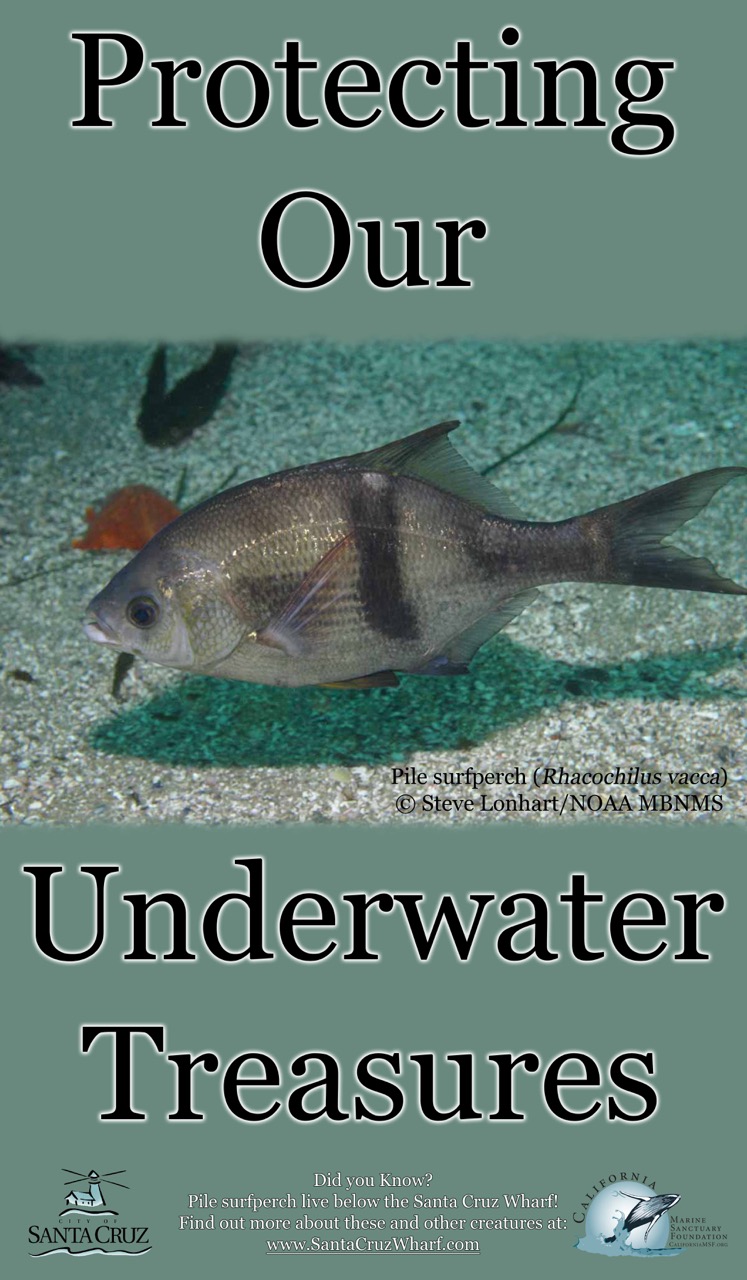 Scientific: Rhacochilus vacca
Scientific: Rhacochilus vacca
Common Name: Pile Surfperch
Diet: Large-shelled invertebrates (molluscs and crabs)
Habitat: Found in the dense kelp forest and areas with pilings or underwater structures. They range from Wrangell, southeastern Alaska to Guadalupe Island and off the north-central area of Baja California, Mexico
About: Pile surfperch are a dark grey or brown with silver metallic shine all over its body. The body of the pile surfperch is compressed on each side and has an overall deep oval shape body. They will live to be at least 10 years old and grow to be about 44 centimeters long or around 11 inches. They tend to be found in water depths of 46 meters or 150 feet.
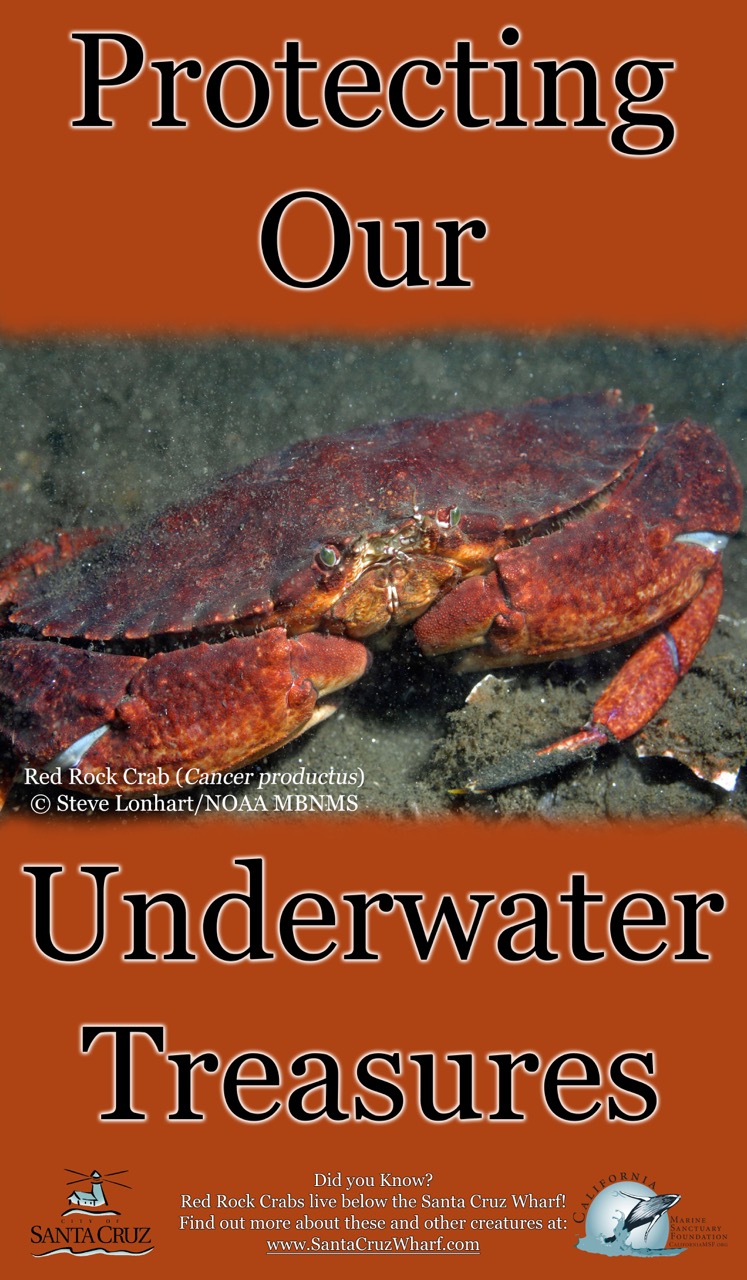 Scientific: Cancer productus
Scientific: Cancer productus
Common Name: Red Rock Crab
Diet: Worms, clams, mussels, other crustaceans and invertebrates
Habitat: Found in tide pools, rocky and sandy areas around the Pacific Ocean on the West side of North America, from Alaska to San Diego
About: Red Rock Crabs are relatives to the well-known Dungeness Crab, but the Red Rock Crab is smaller. The females, on average, grow to be about five inches and the males grow to be about seven inches. They are distinguishable by their deep red color and black tips on the ends of their legs. Depending on the location, the tone of the crabs will change. They more north you are, the darker the tone of red the crab is. Red Rock Crabs have five teeth protruding anteriorly between their eyes and nine teeth protruding laterally to the side of each eye. Red Rock Crabs will mate in the summer after the female has molted. Because the female is exposed with no shell to protect her, the male will guard her by holding her under his abdomen. This situation can last several weeks until the females exoskeleton has harden.
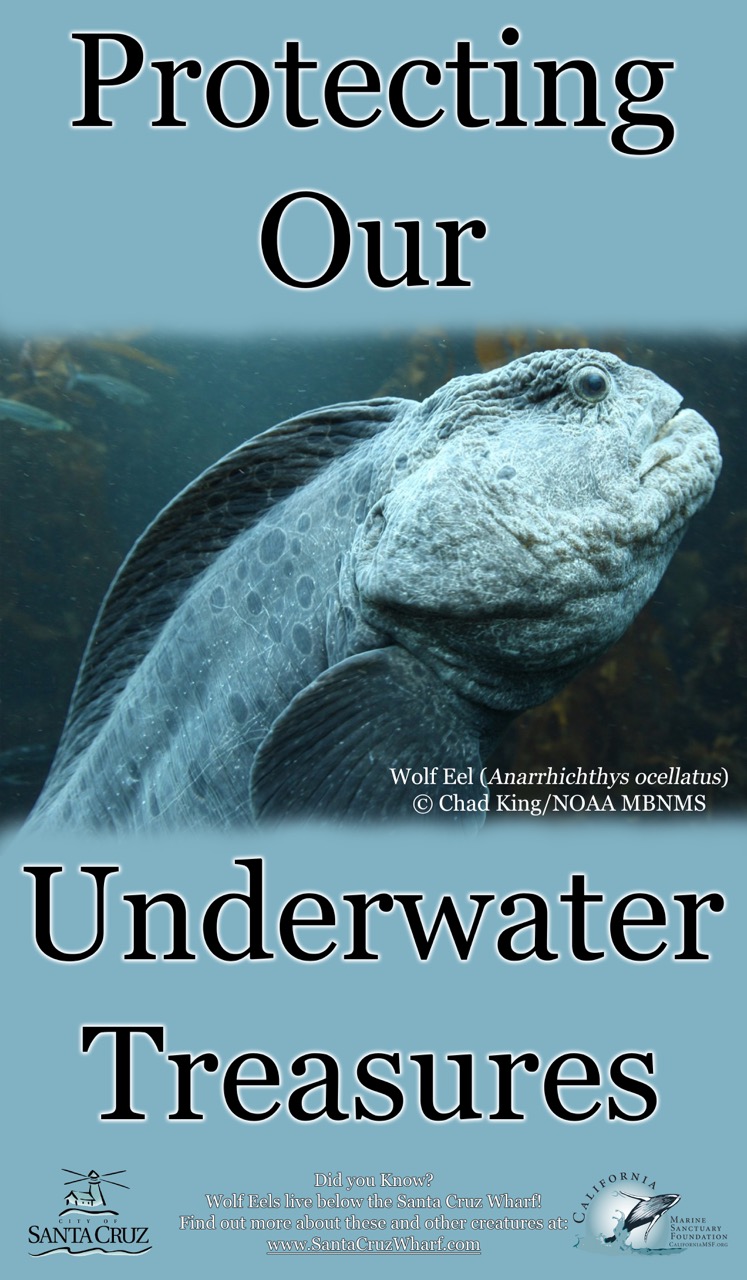 Scientific: Anarrhichthys ocellatus
Scientific: Anarrhichthys ocellatus
Common Name: Wolf Eel
Diet: Crabs, sand dollars, sea urchins, snails, abalone, mussels, clams, fish
Habitat: Found in reefs and pilings along the Pacific Coast of North America and ranging from North Baja, Ca to Kodiak Island, Ak, west to Russia and south of the Sea of Japan
About: Wolf eels make up for their looks and sluggish movements with their powerful jaws. Wolf eels have a killer instinct beginning in their first few days of life. They grow to be about eight feet and will mate for life with one another. Wolf eels will spend most of their lives in rocky shelters preying on animals that travel by. With their secure shelters, impressive size and powerful jaws you would think that the wolf eels would be safe from other marine mammals, but wolf eels need to be on a constant lookout for for hungry harbor seals and sharks.